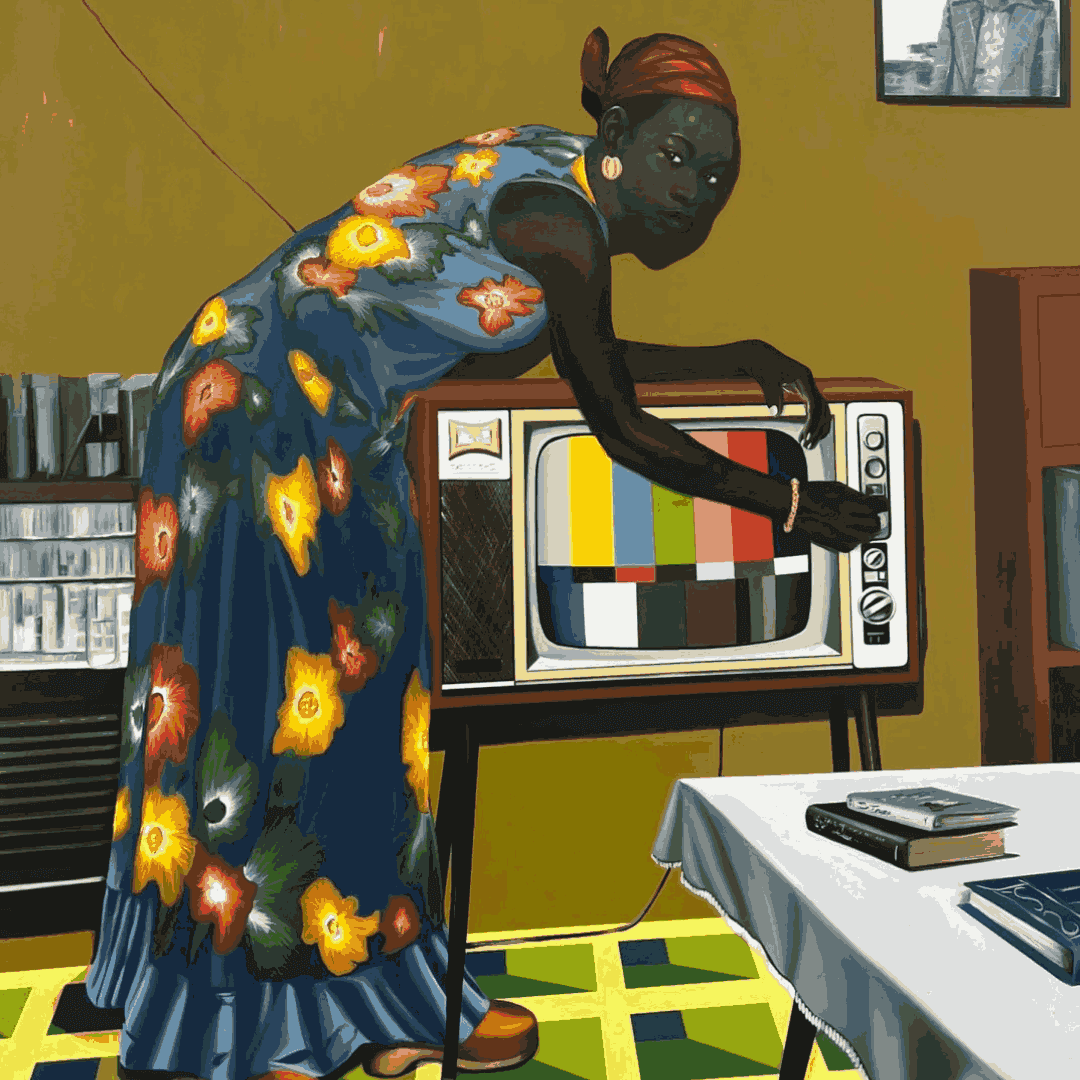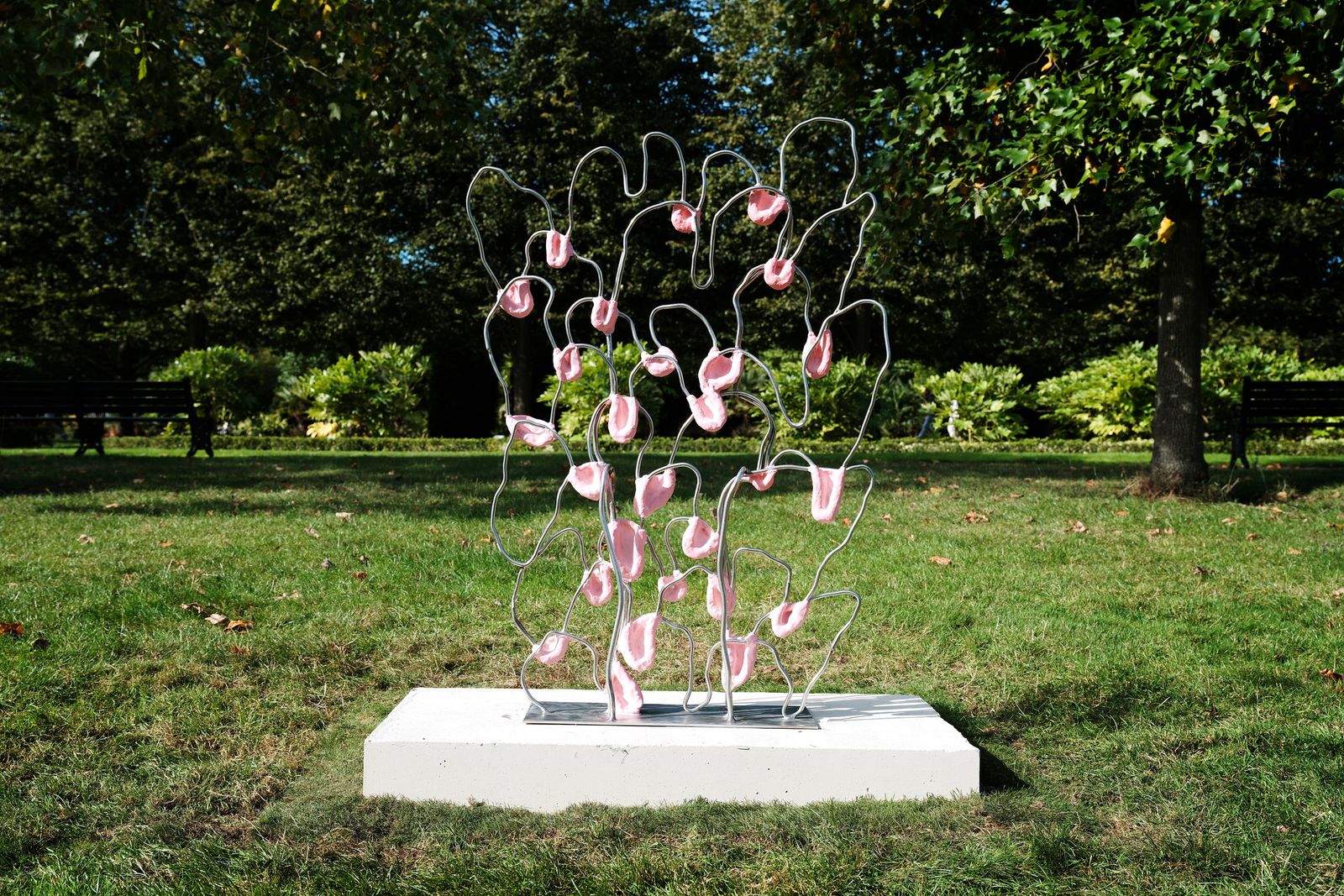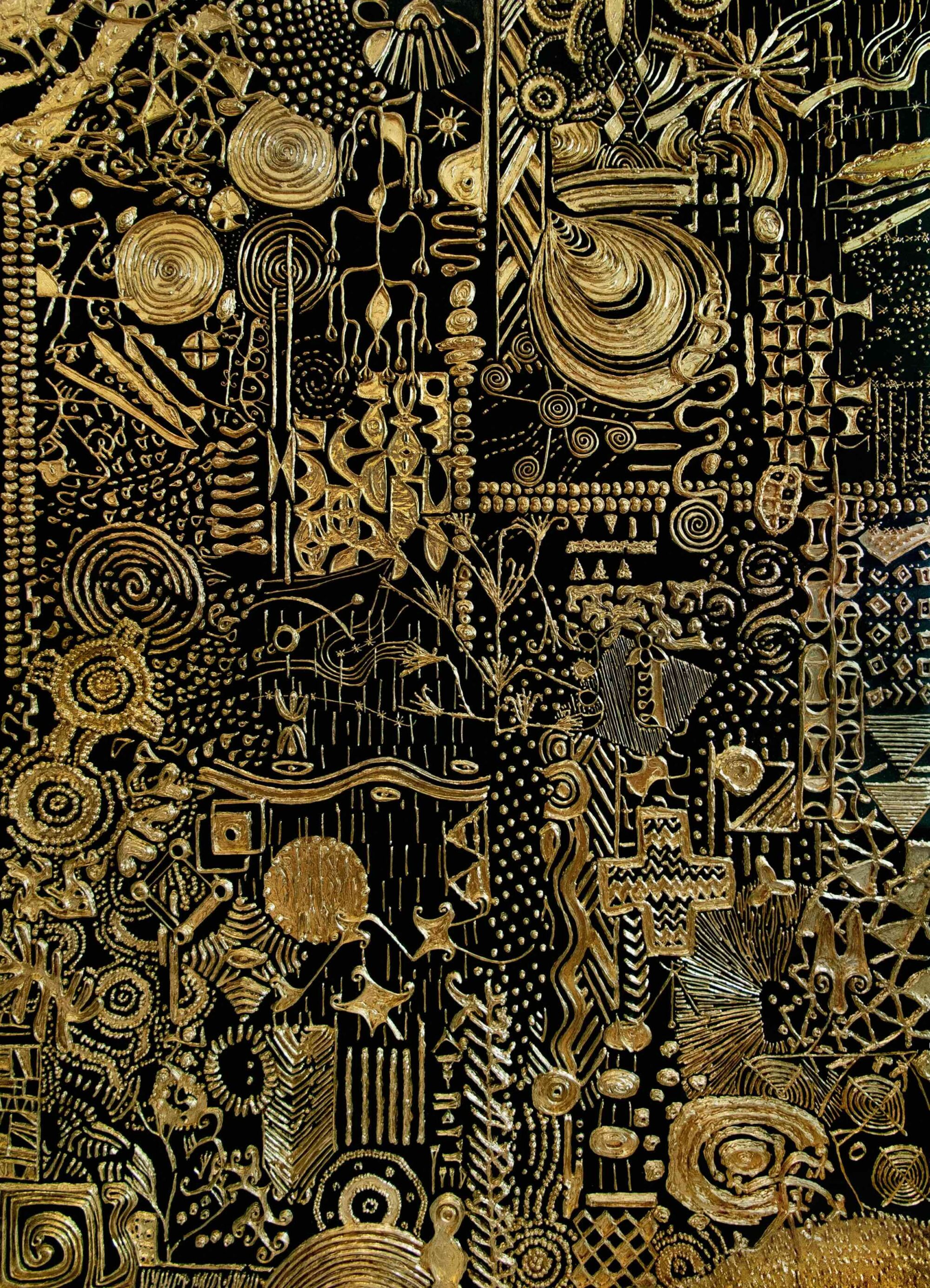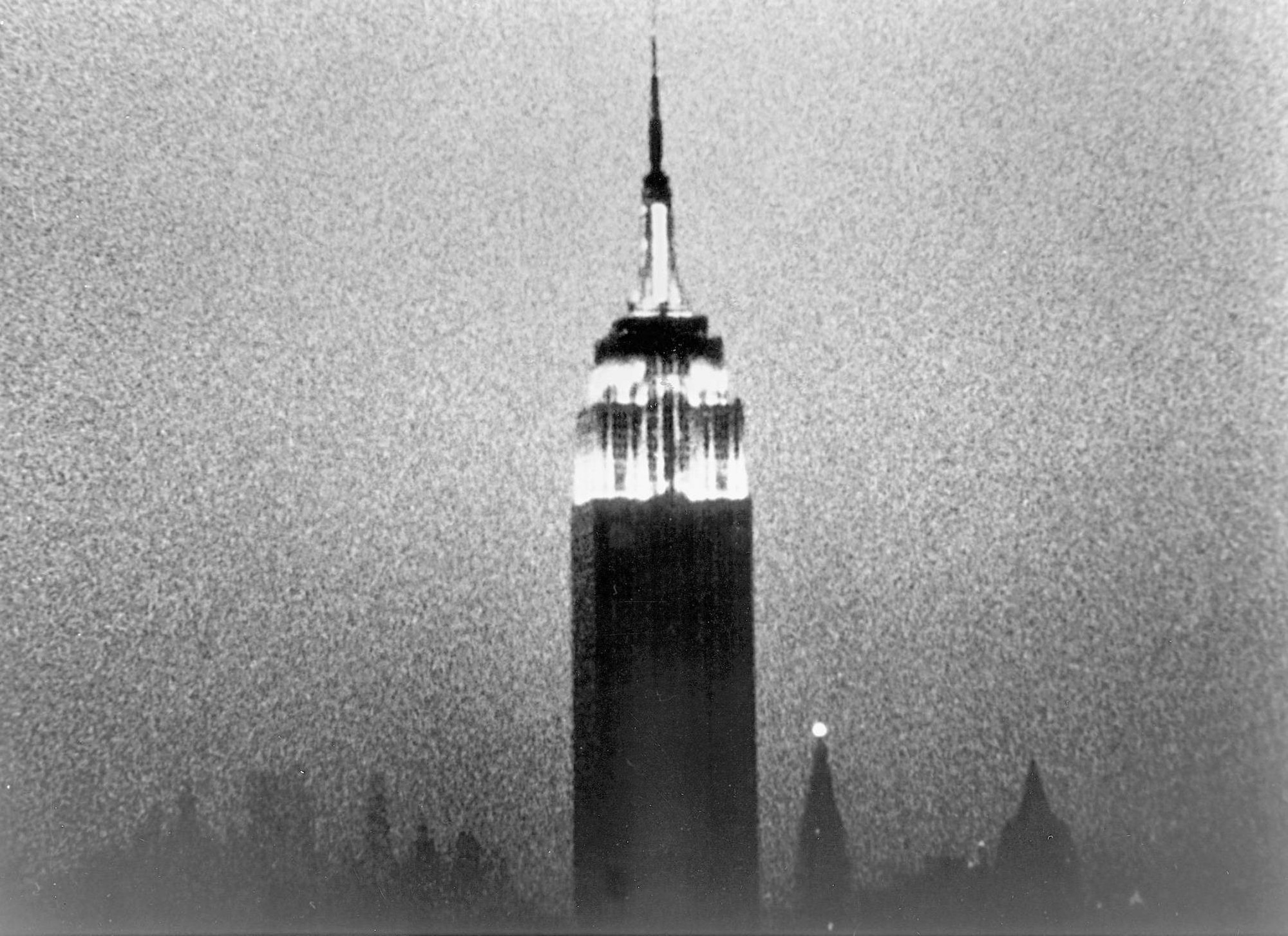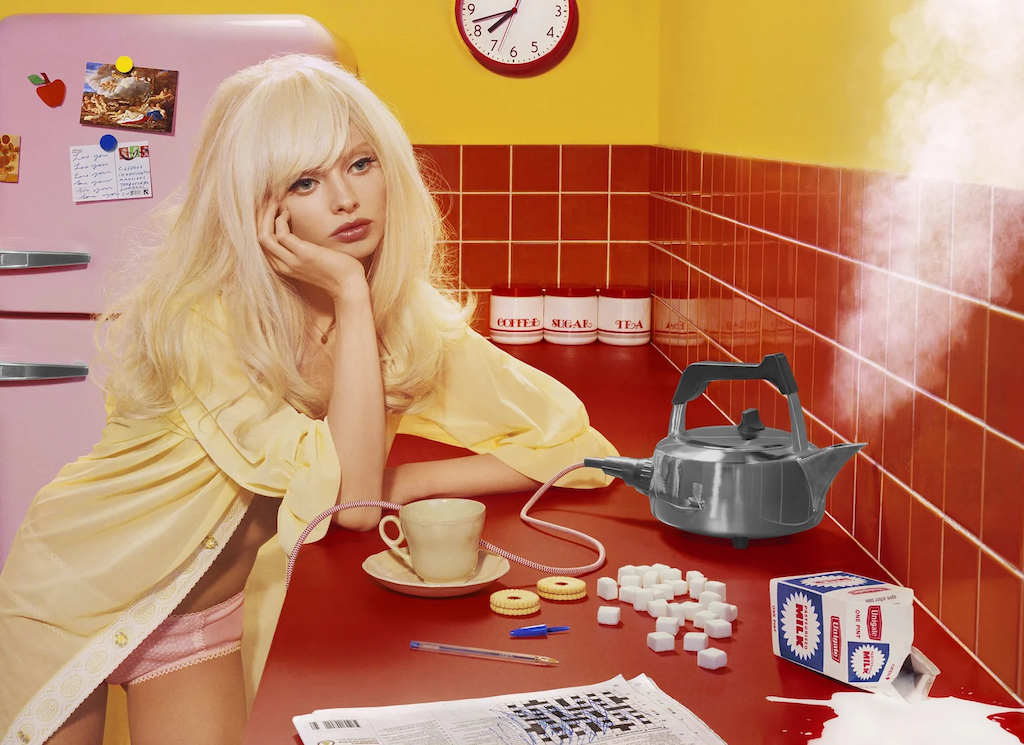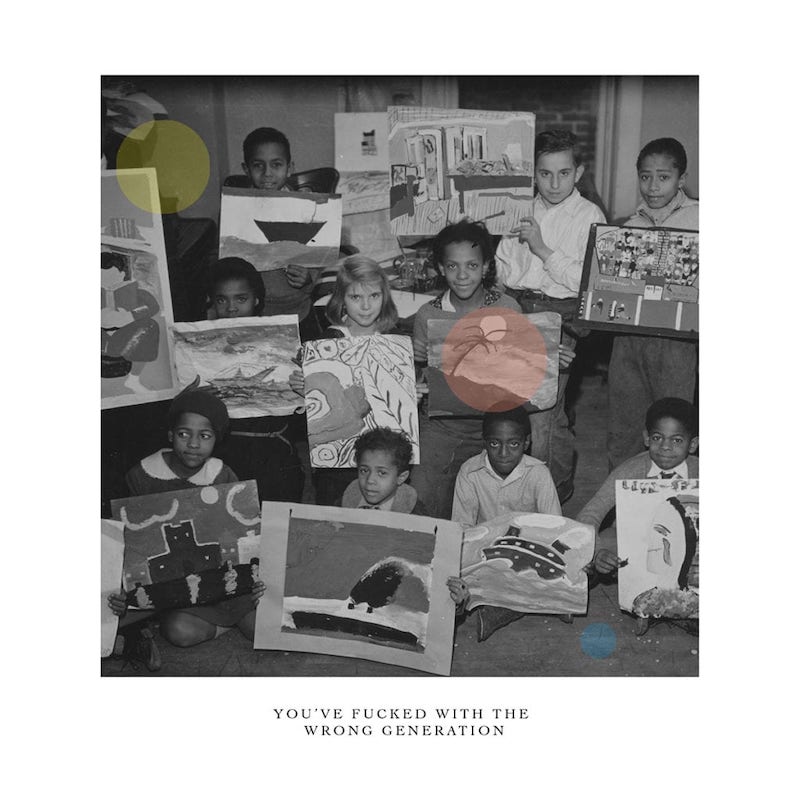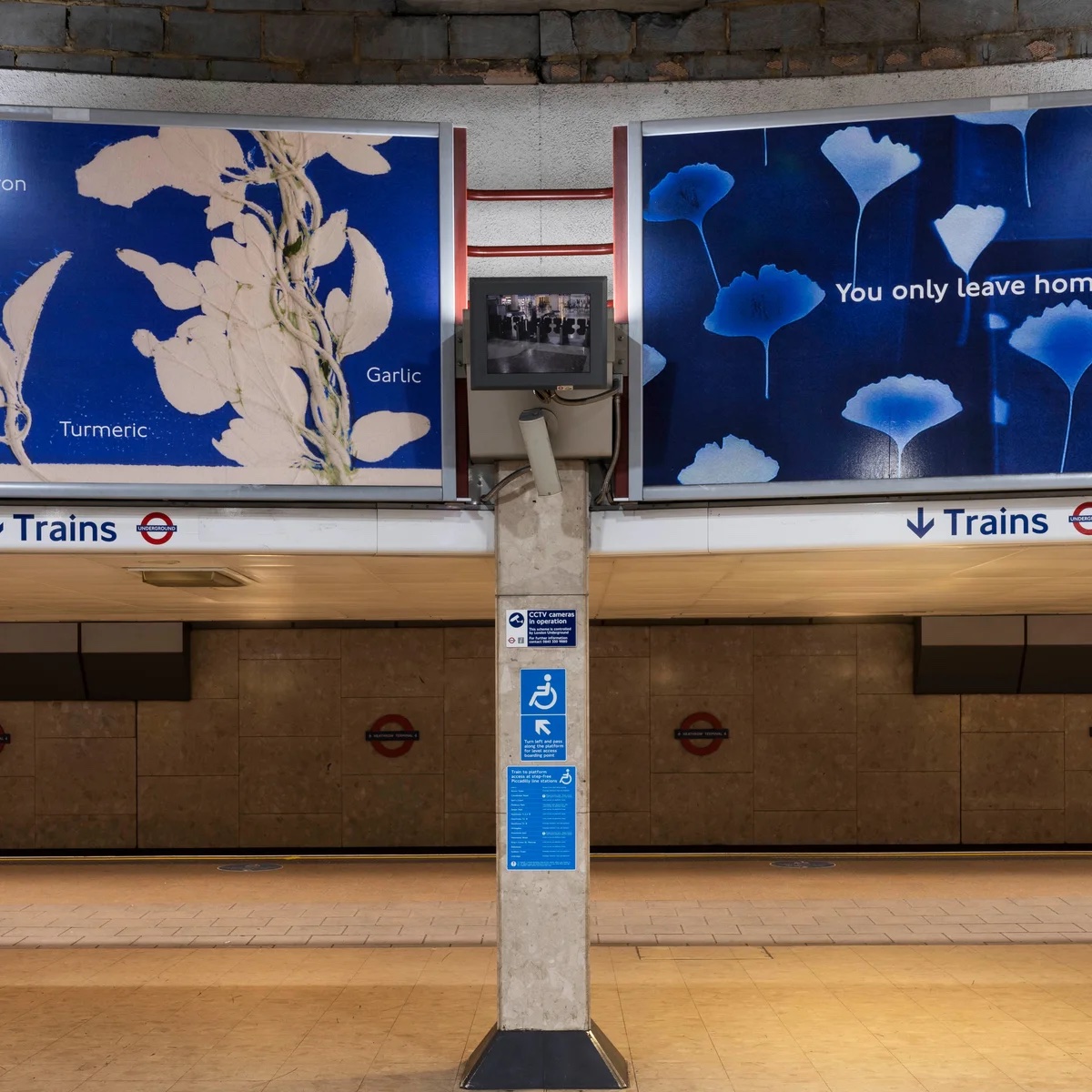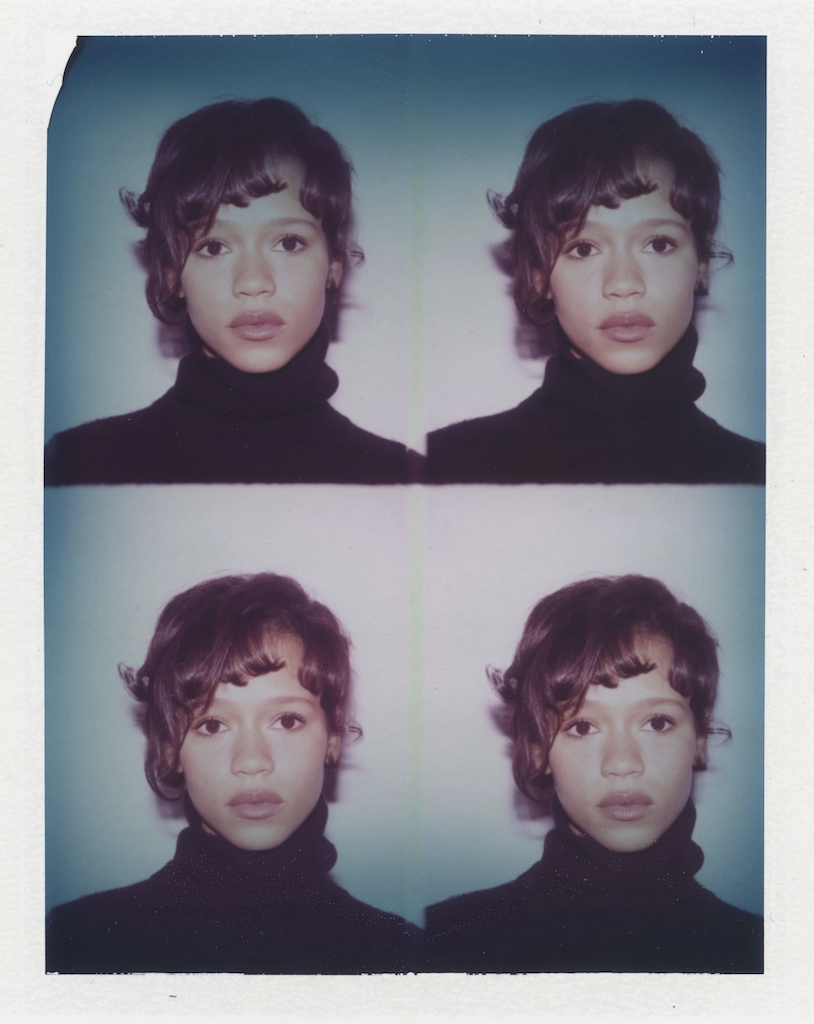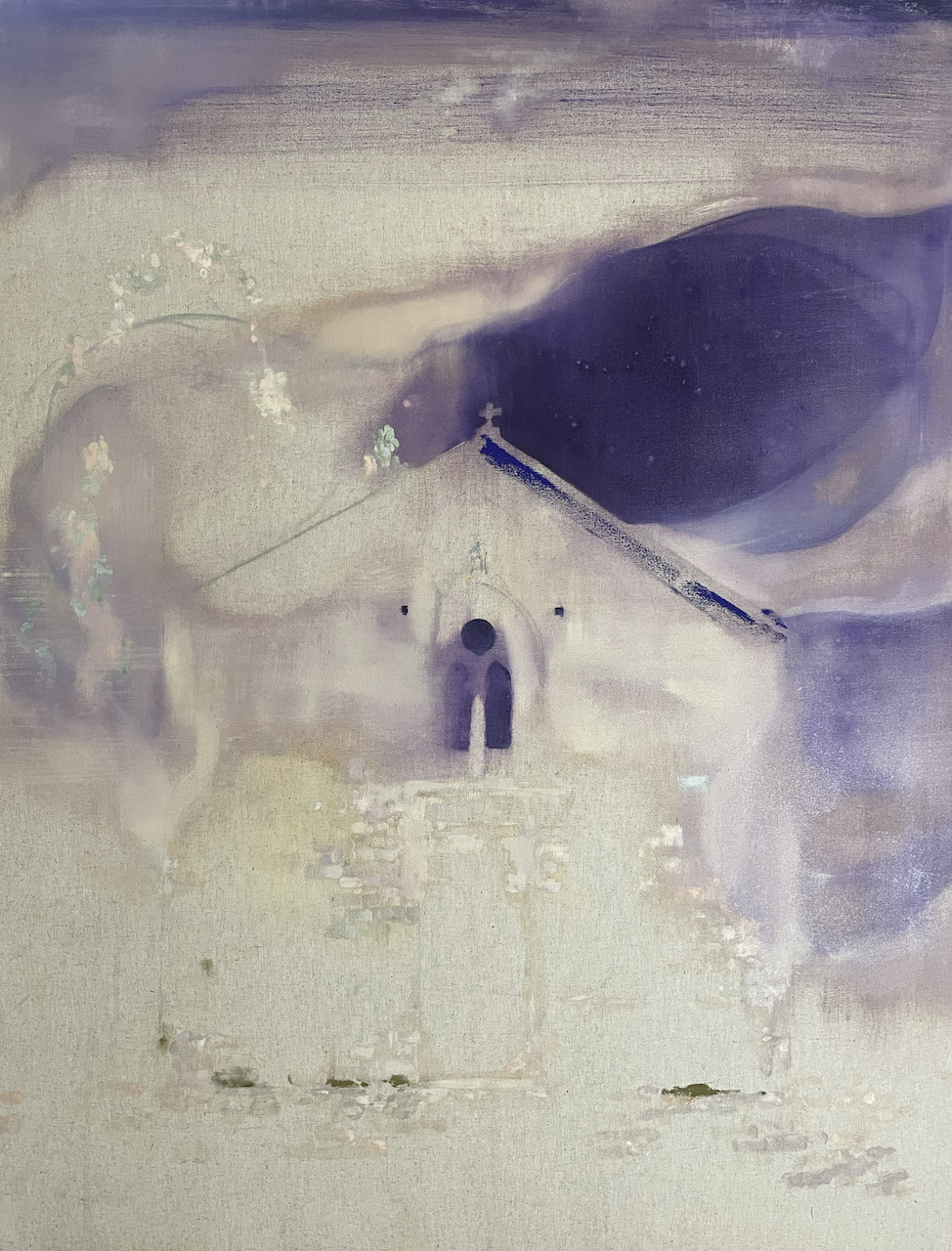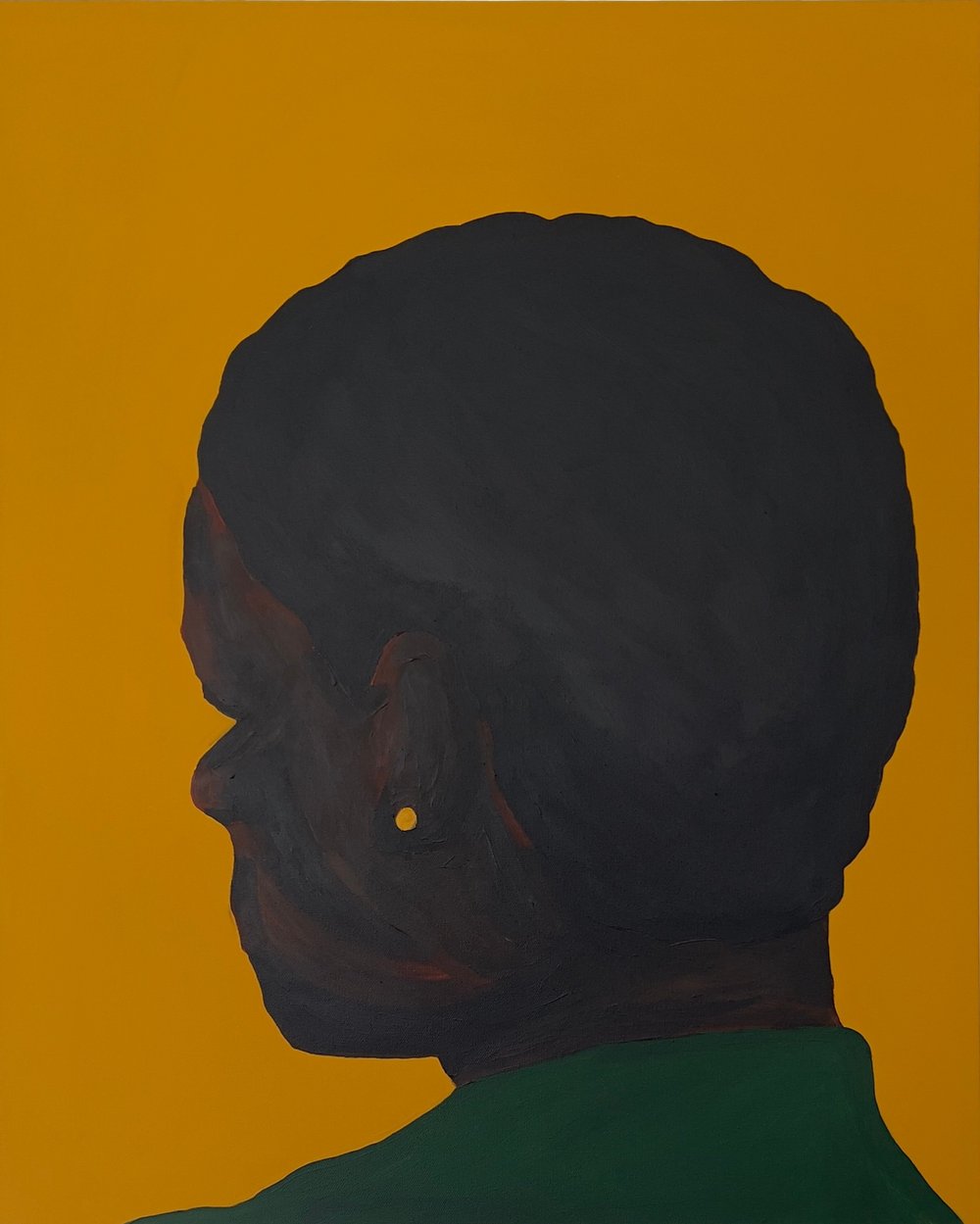
Discover Sumuyya Khader
One of many celebratory events taking place this month includes Conversations, at the Walker Art Gallery, Liverpool, bringing together work by more than fifty Black women and non-binary artists. Among them is Sumuyya Khader, an upcoming Liverpool-based painter and illustrator who produces bold, blocky graphic illustrations and printed works for protest posters and book covers, social enterprises, and artist-led groups, as well as minimalist paintings in acrylic, working in both figurative and abstract modes. This dipytch portrays two figures close up, seen from behind – a subtle gesture of reclamation as the subjects maintain their power in autonomy, their gaze turned away from the viewer.
Khader is also the founder of Granby Press, a community-based organisation focusing on printed matter and design, and is in the process of collecting an archive of black culture and history in the L8 area of Liverpool. Conversations opens on 19 October and runs to 9 March 2025.
